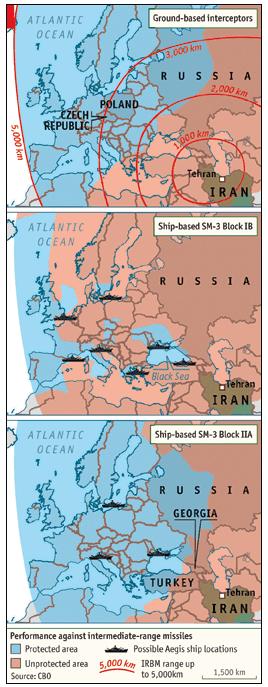
Sure, I read the press release;
The guided-missile destroyer USS Stout (DDG 55) returned to Norfolk Va., earlier this month, following a six-month deployment to the 6th Fleet Area of Operations in support of Navy Ballistic Missile Defense (BMD), maritime domain awareness, and theater security cooperation.But what capability do we really have right now and in the near future? By getting rid of the GBIs; what have we given up?
During this deployment Stout completed the inaugural Navy Ballistic Missile Defense deployment in the European Command (EUCOM) Area of Responsibility. Stout is one of only two ships, along with USS Ramage (DDG 61), on the east coast with BMD capability.
"BMD is definitely in high demand," said Cmdr. Mark J. Oberley, commanding officer of USS Stout. "Our last deployment to the European theater was specifically to provide a ballistic missile defense capability to EUCOM if needed. We deployed independently in support of this mission. Independent deployments are fairly routine. Historically U.S. Navy ships have deployed independently, going out on single deployments for multiple engagements around the world."
There are 18 ships equipped with Aegis BMD, and all but Stout and Ramage are currently based in the Pacific. By the end of Fiscal Year 2010, the Navy will have 21 BMD-capable Aegis ships, and is building towards 32 ships in 20152015; pocket that date away.
In a very solid article from The Economist, and excellent graphic on the BMD challenge via the CBO - though remember that Block IB only passed design review this JUL; so we have a ways to go to even get to the first graphic. All the info about the "now" concerns the less capable Block IA. We won't talk actual load-outs and numbers - ahem - keep that to yourself, not in comments please.
Even with an updated version (the Block IB update of the SM-3 missile, now due to be introduced in 2015), seven ships deployed in European waters could provide only patchwork protection. Maintaining it permanently would need more than the 18 Aegis ships that America now has. In a crisis, ship-based defences could “surge” only temporarily.Assume that the graphs and MODLOC positions are correct. We will also assume that production and performance timeline estimates are correct; ahem.
The more powerful Block IIA version of the missile, expected in 2018, should mean that Europe can be protected from just three locations. But a study by the Congressional Budget Office in February reckoned that placing these on ships would cost almost twice as much as the GBI system. A favoured site would be the Black Sea, but the 1936 Montreux Convention limits foreign warships’ presence there.
Here is the math I want you to do.
How many ships will we have in FY10 that can deploy with SM-3 Block 1B (with enough VLS cells to make a usable BMD loadout). OK, that is easy; none.
Not IOC, but when will we have a usable number of Block IIA out there that ships with enough VLS cells filled in each ship? How many ships does it take to "make" seven MODLOCs? (NB: not a trick question)? How many missiles does that make? When will we have that number.
How many three with the Block IIA?
What FY be that be?
Do we have a surge concept of operations? If so, how long can we sustain a surge?
And the, literally, money quote; where do we get the money to make that happen - and where will that money come from.
Hey, sounds like another post. Maybe Monday.









No comments:
Post a Comment